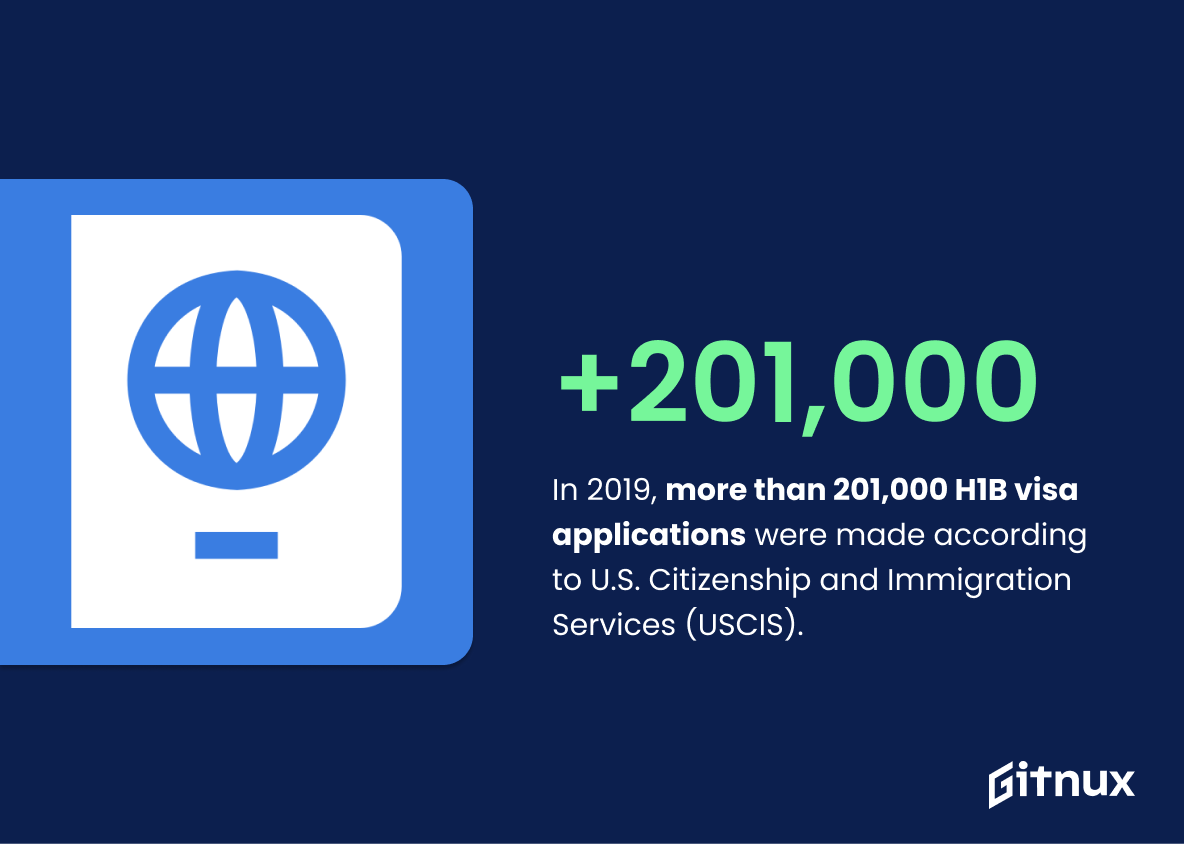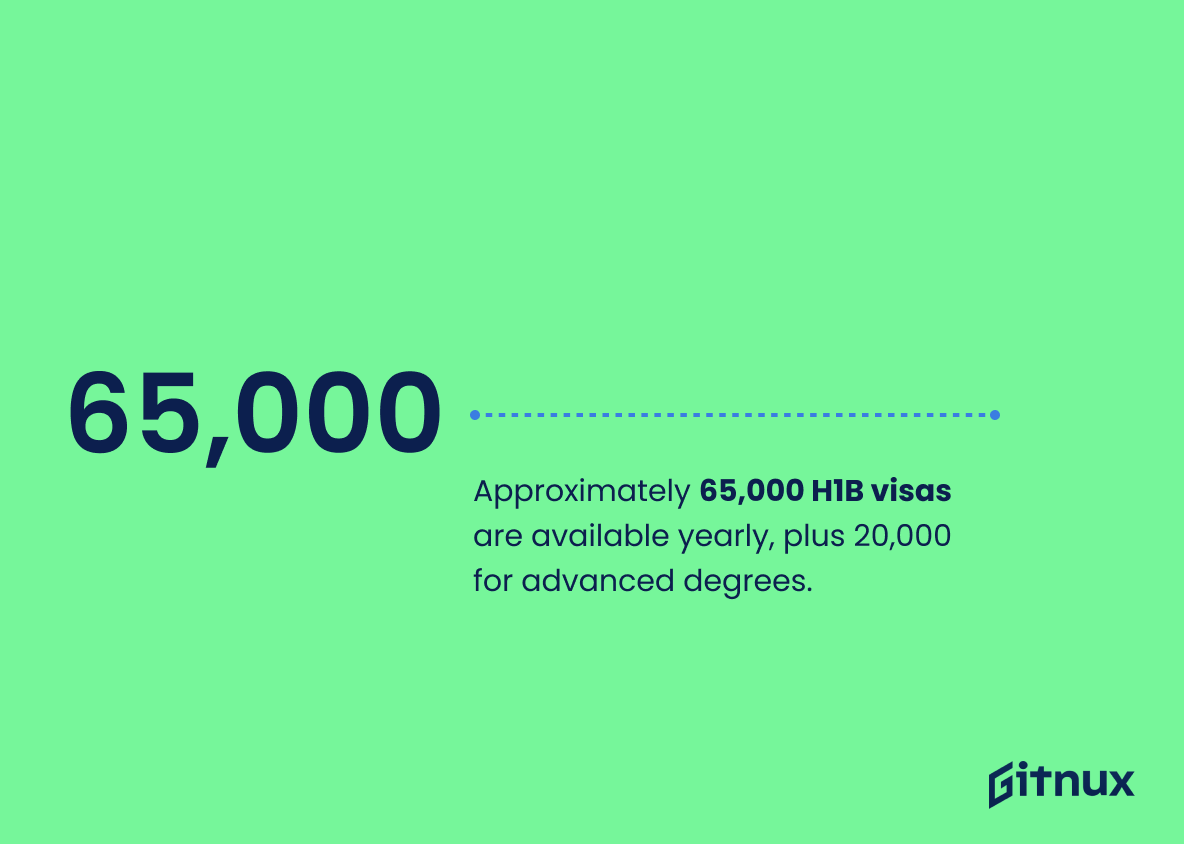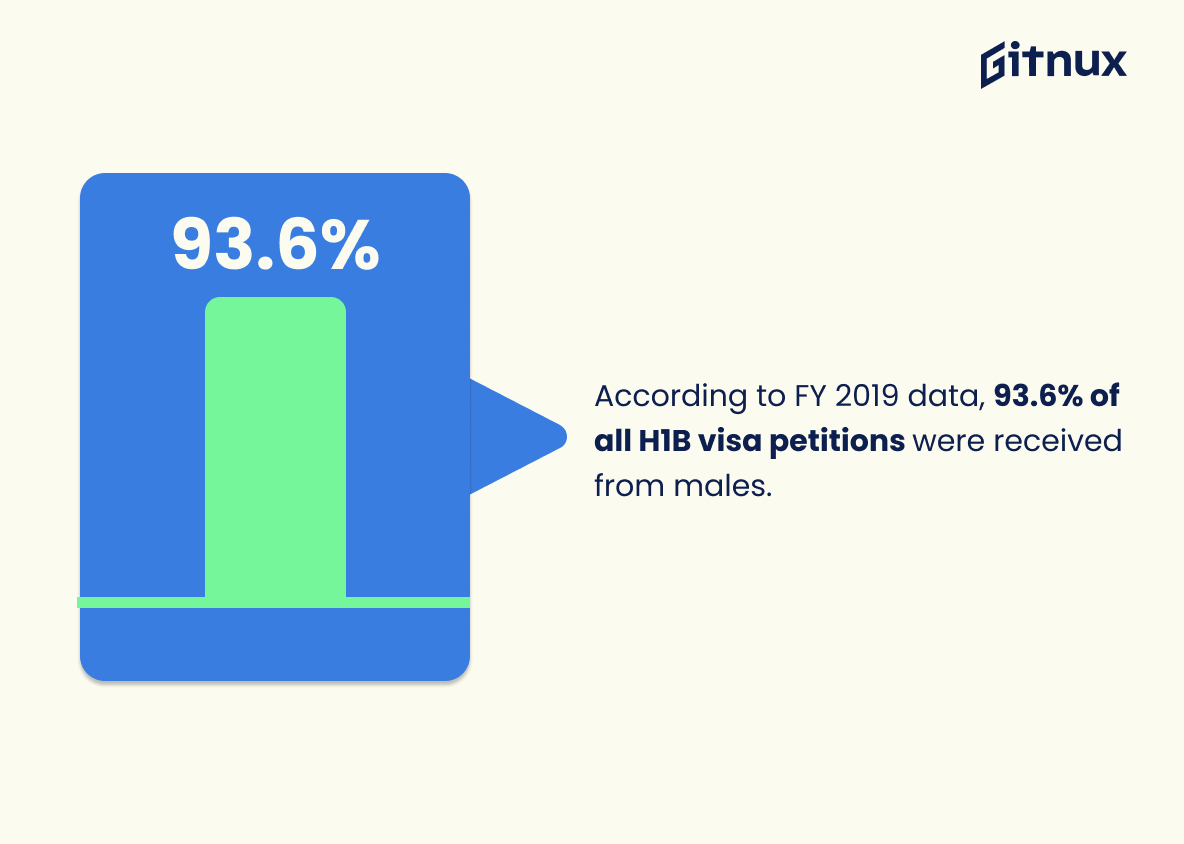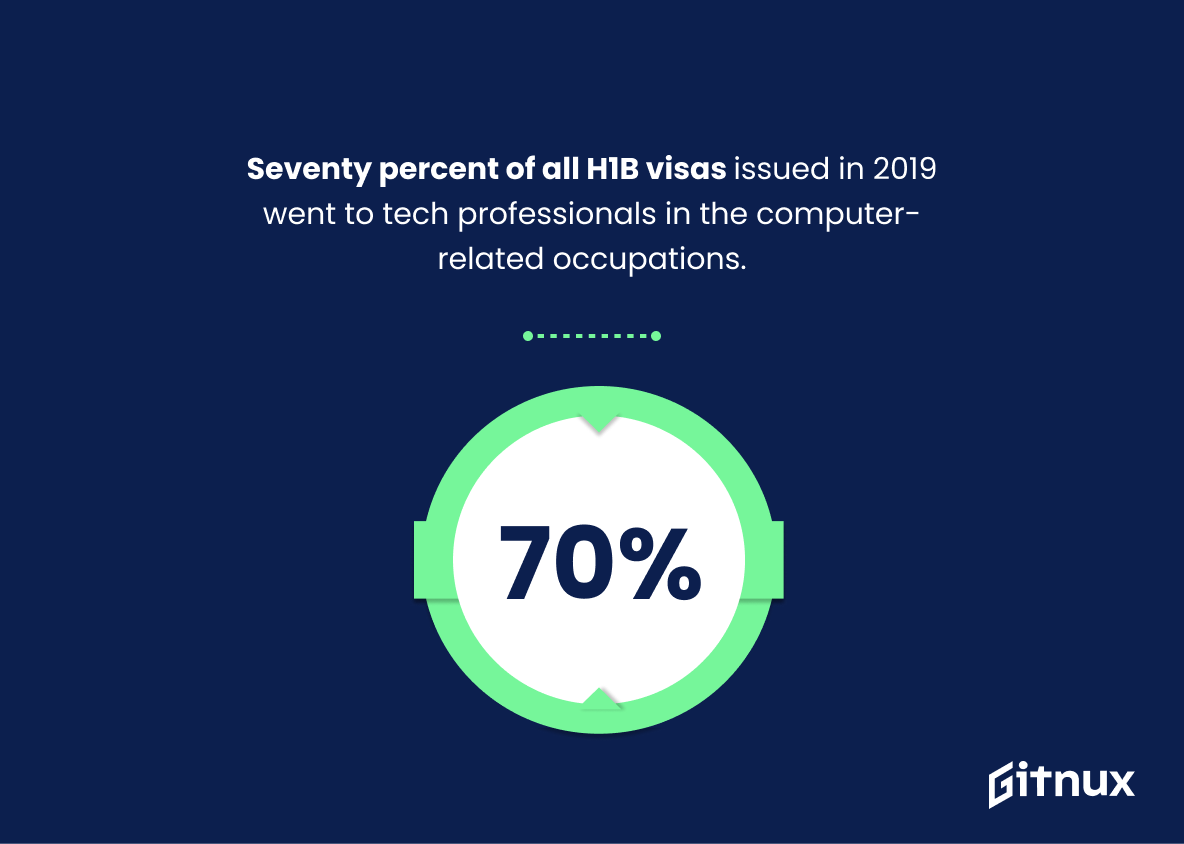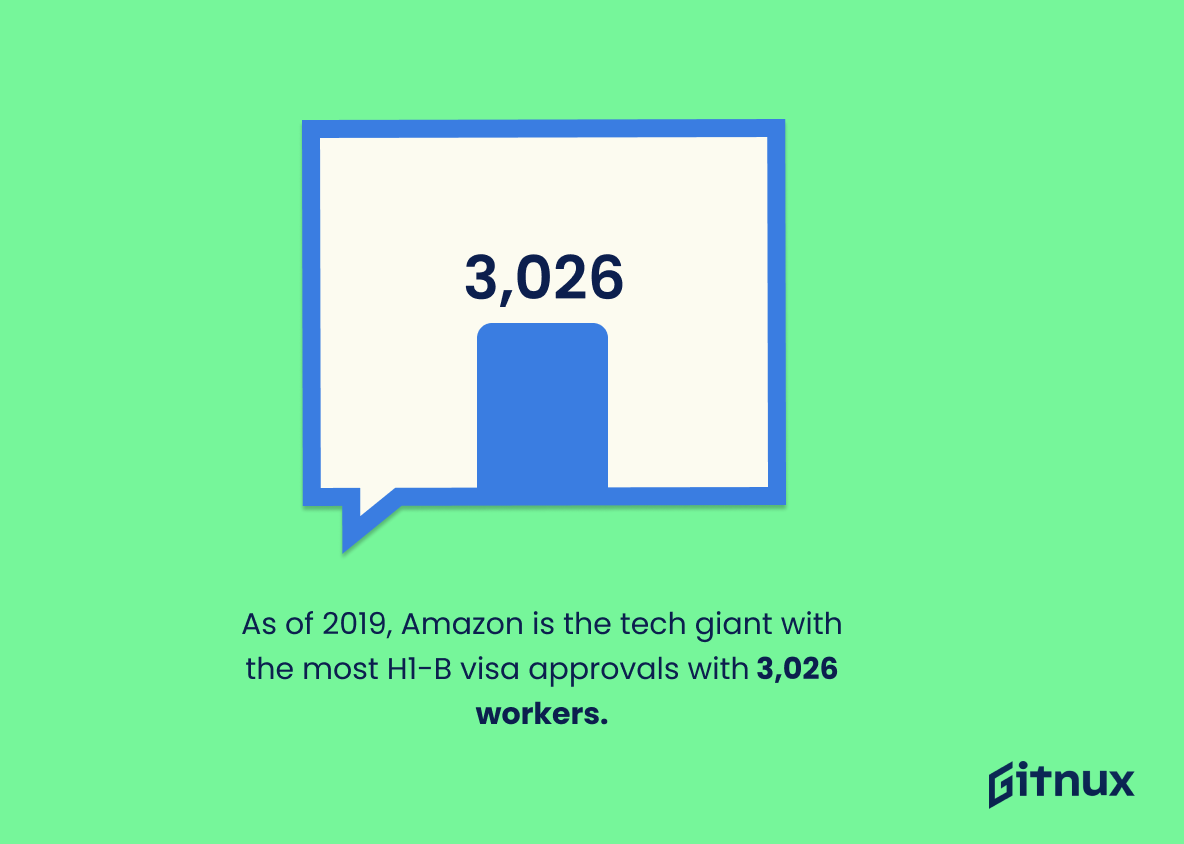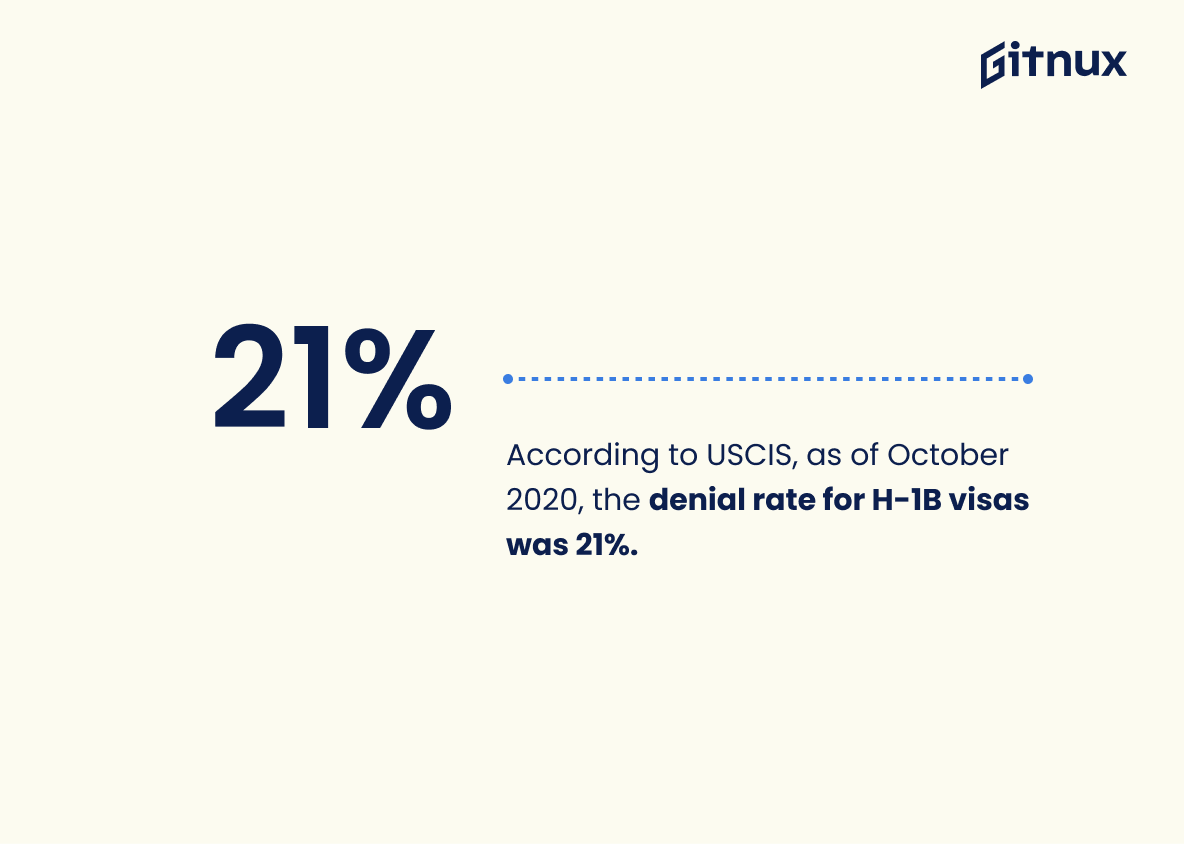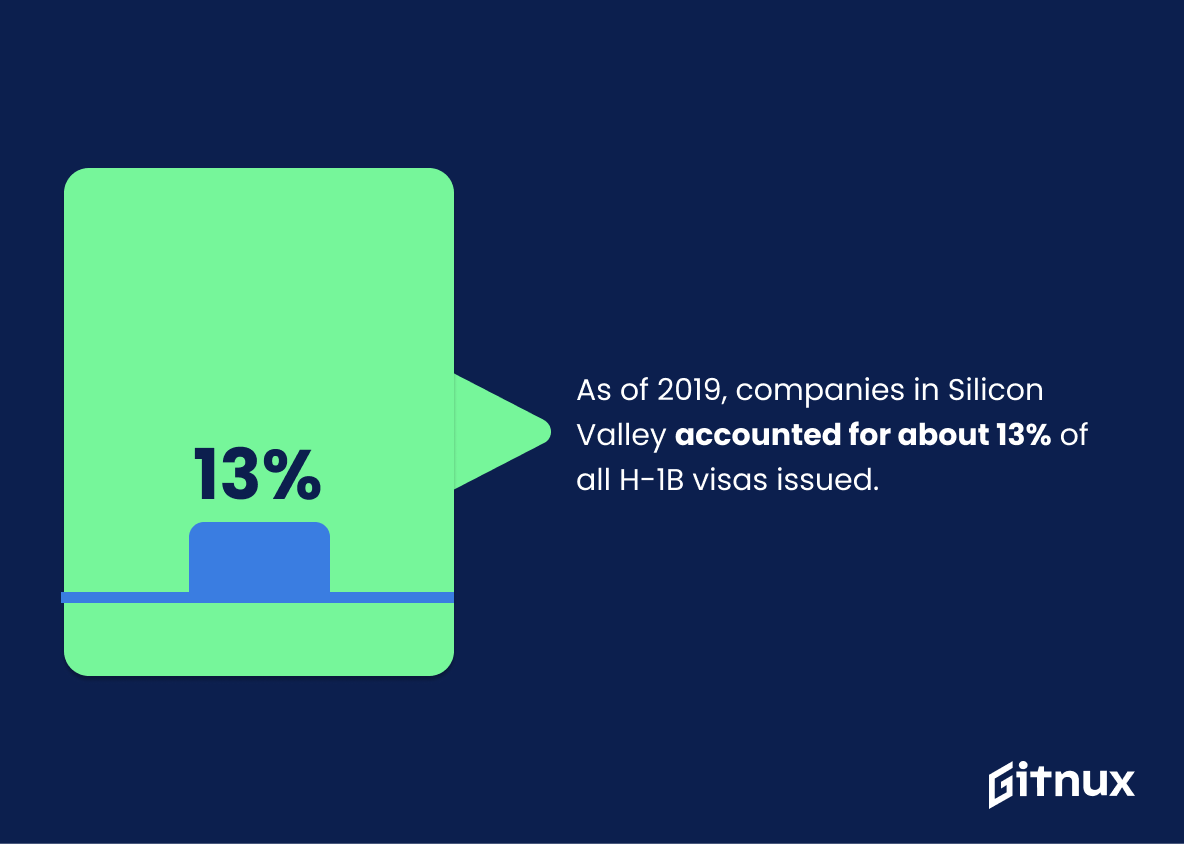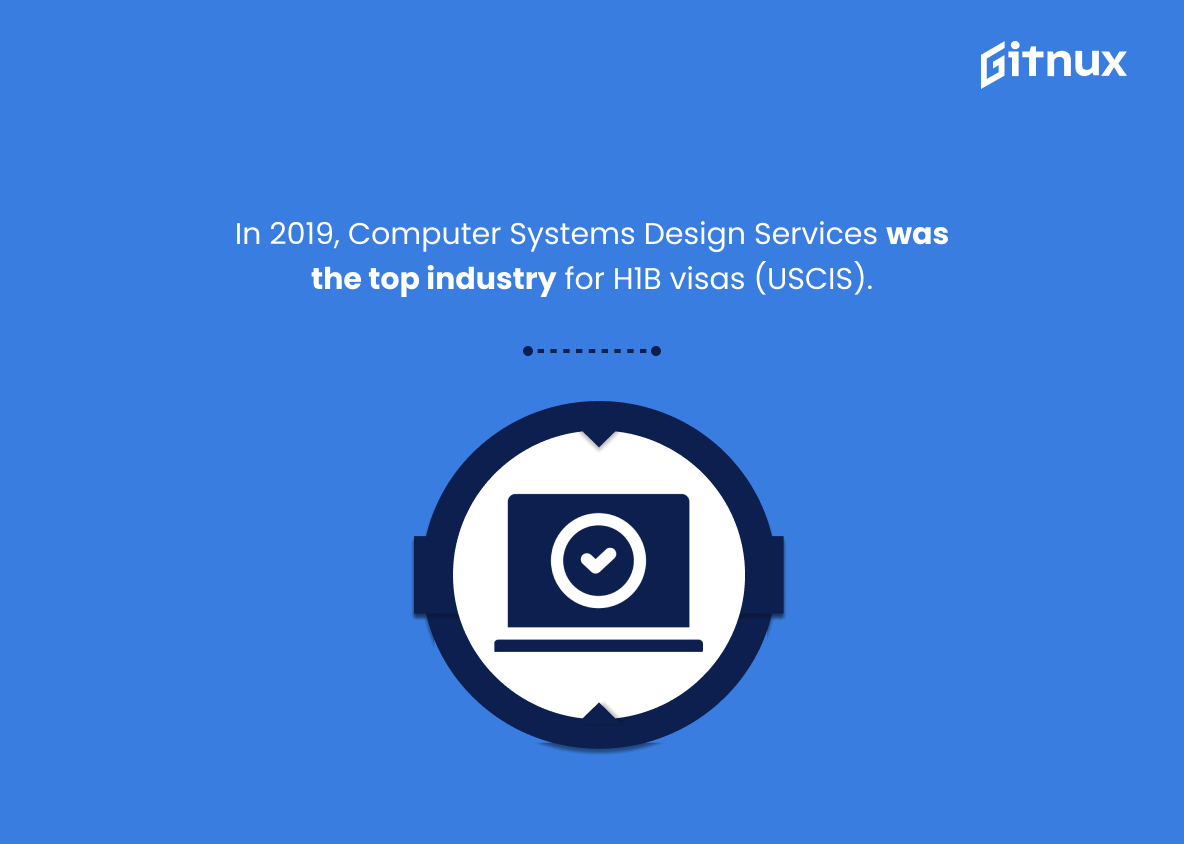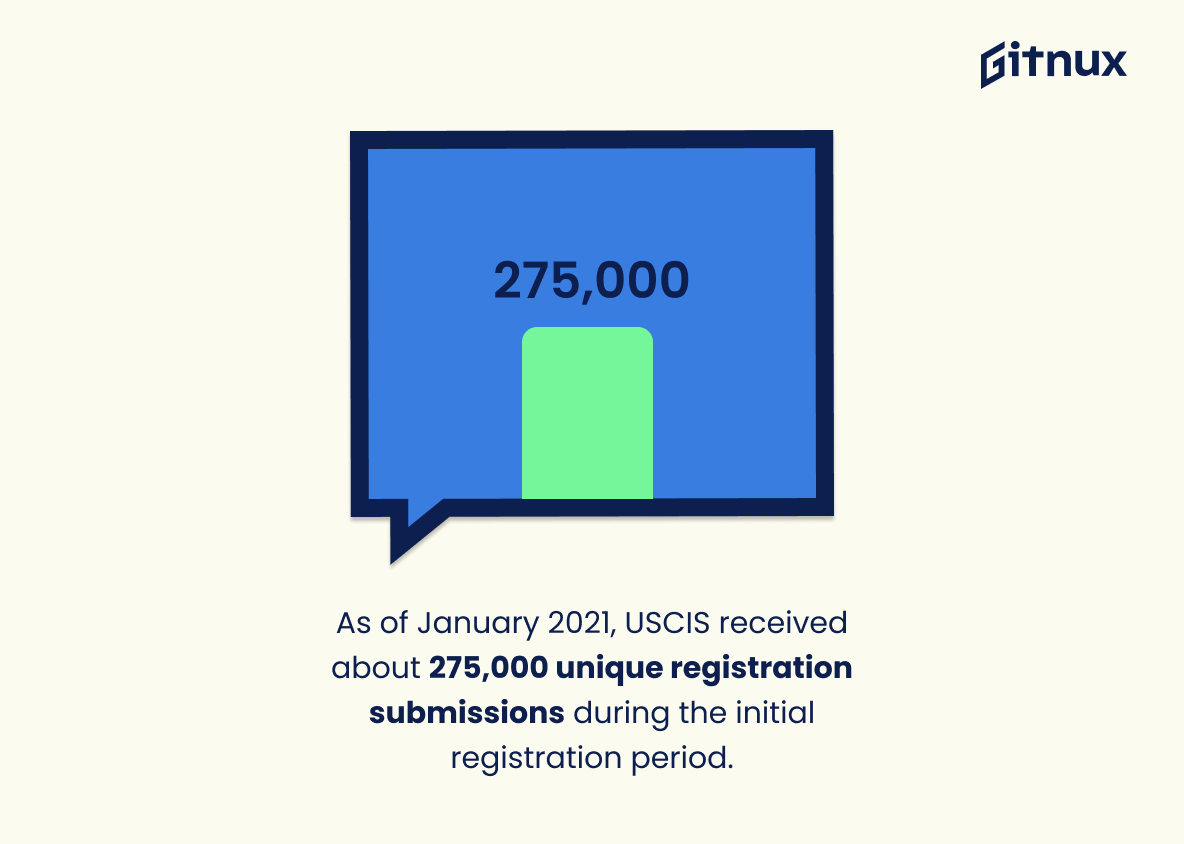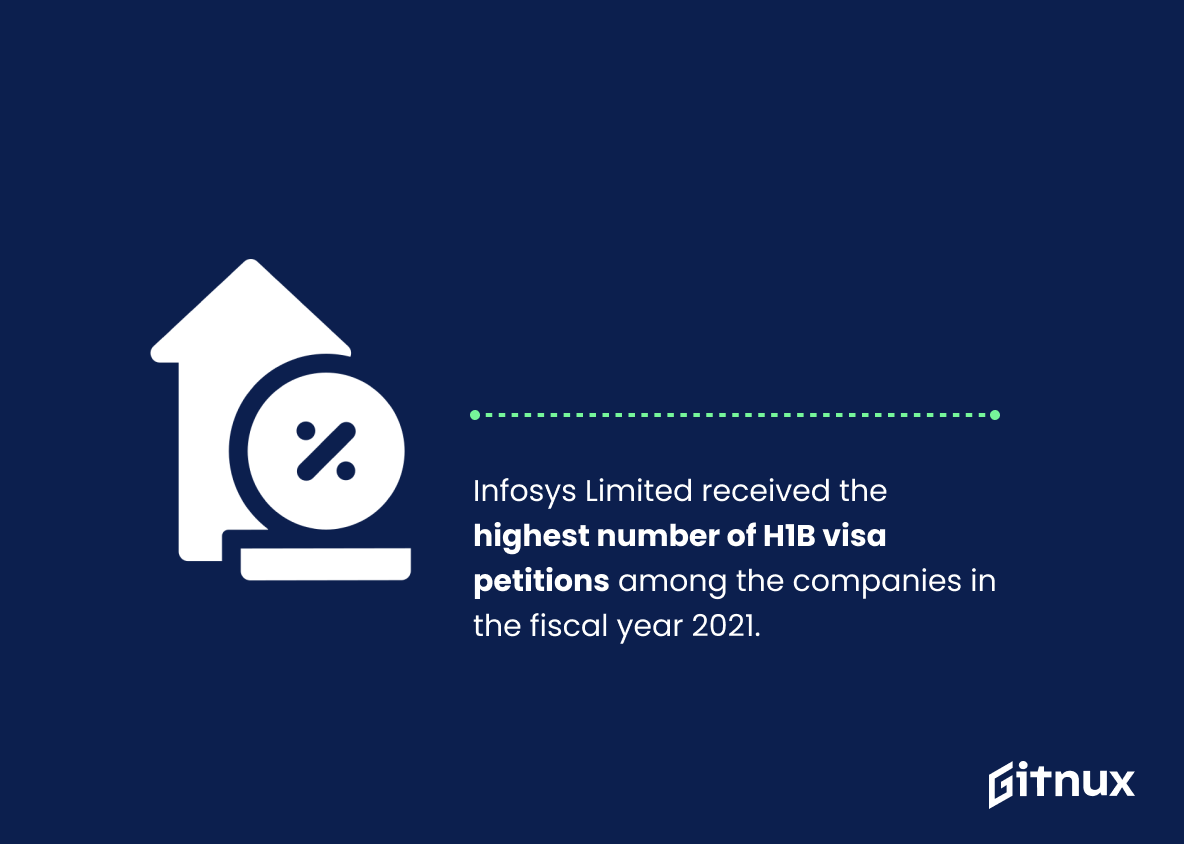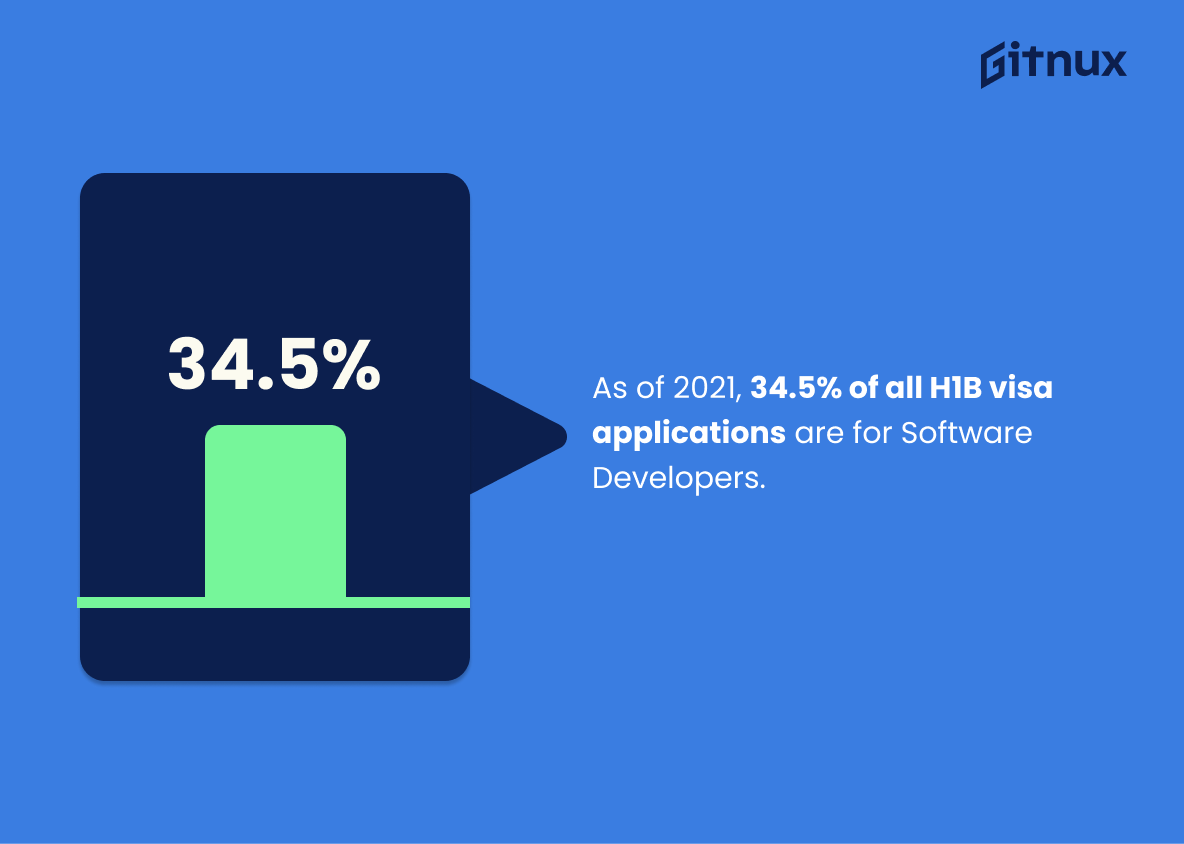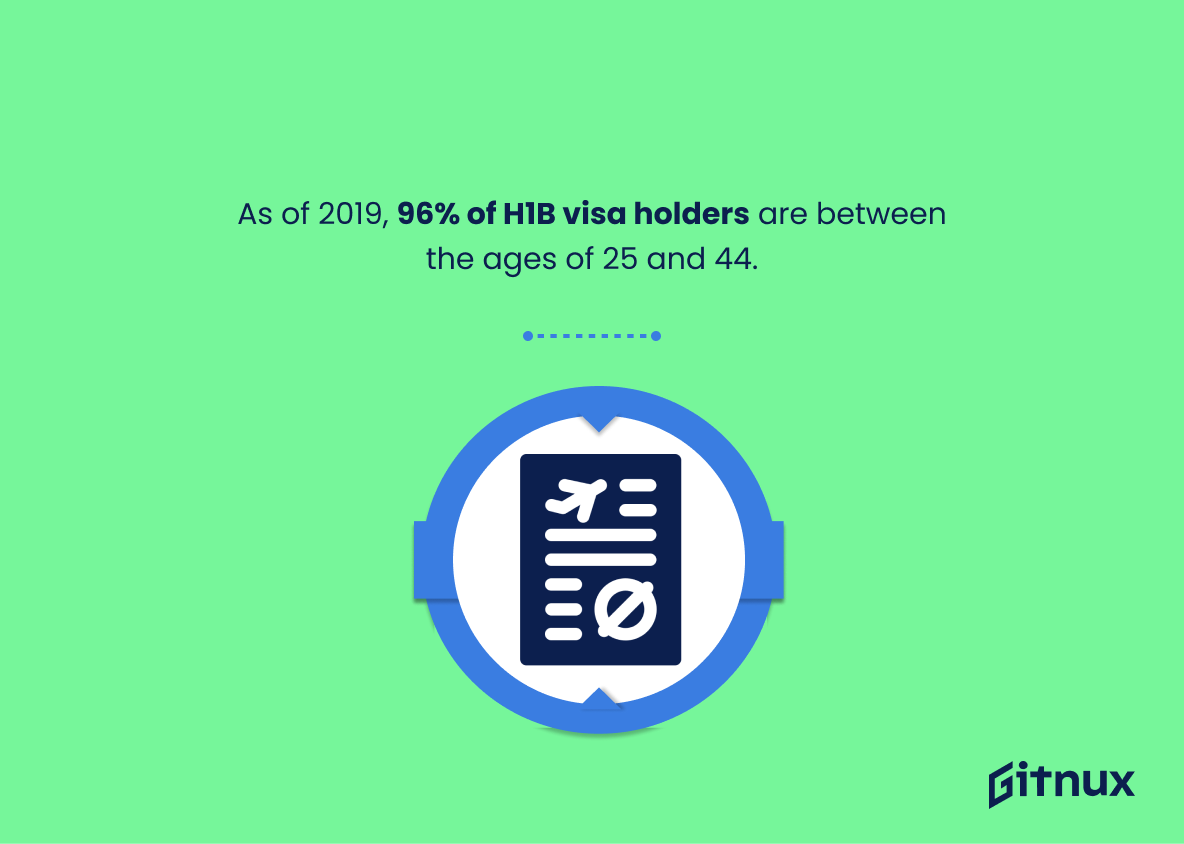In our increasingly global society, understanding immigration trends and policies is more essential than ever. One prominent part of this complex terrain is the H1B visa program. In the following blog post, we delve deep into the realm of H1B Visa Statistics, shedding light on the prevailing trends, demographic details, and evolving scenarios.
Whether you’re an immigrant seeking opportunities in the United States or an employer looking to navigate the ins and outs of the H1B program, we’ve got you covered. Join us, as we decipher the numbers and analyze the facts that shape the narrative of this significant visa program.
The Latest H1B Visa Statistics Unveiled
In 2019, more than 201,000 H1B visa applications were made according to U.S. Citizenship and Immigration Services (USCIS).
Peering into the sheer volume of H1B visa applications in 2019, it’s unmistakably clear that the H1B program plays a substantial role in the U.S. economy, bringing over 201,000 prospective professionals, according to U.S. Citizenship and Immigration Services. This significant figure provides not just a snapshot of a single year’s interest, but is a testament to the allure of the American professional marketplace for foreign workers.
By prominently featuring this statistic in a blog post about H1B Visa Statistics, we underscore the numerical weight driving this socio-economic phenomena, layering a concrete foundation of understanding for our readers.
According to the USCIS, India accounted for 67.7% of all H1B visa applications in FY19.
Highlighting the striking 67.7% figure of H1B visa applications from India in FY19 provides a clear picture of the depth of the India-U.S. technological talent exchange. It underscores India’s dominant role as a tech manpower contributor to the U.S’s IT industry. This data point could further spin an engaging narrative on the demographics of U.S immigration, particularly with regard to skilled labor. It ignites thought-provoking discussions on international labor trends, immigration policies, and their impact on the global tech industry.
Around 65,000 H1B visas are available each year according to congress mandate, excluding the additional 20,000 visas for advanced degree exemption.
In plunging into the realm of H1B Visa Statistics, one cannot dismiss the pivotal role played by the congressional mandate, assigning a yearly quota of approximately 65,000 H1B visas. This figure serves not just as a numerical benchmark, but significantly impacts prospective non-immigrant workers, multinational companies, and the economic dynamics of the nation.
Further, the enhanced cushion of an extra 20,000 visas for advanced degree exemption introduces a new layer to the conversation. Such data provides vital insights into the fusion of immigration policy, employment opportunities and high-level education, crafting an intriguing tale of yearly talent influx that shapes the American workforce landscape.
According to FY 2019 data, 93.6% of all H1B visa petitions were received from males.
This compelling figure vividly portrays a significant gender skew in the H1B visa petitions, with a staggering majority of 93.6% coming from males in FY 2019. Speaking volumes about the gender distribution in specialized fields that require H1B visas, this data can unlock deeper discussions about equality in foreign labor in the U.S.
Not steering clear of the unavoidable question ─ why females aren’t as prominently visible in these applications? The statistic serves as a starting point for conversations about diverse workforce and gender inclusivity in those sectors. Thus, making it indispensable to any comprehensive analysis on the subject of H1B Visa Statistics.
Seventy percent of all H1B visas issued in 2019 went to tech professionals in the computer-related occupations.
Unpacking the magic of numbers reveals a gripping narrative around H1B visas. The spotlight on the hefty 70% share goes to tech professionals in computer-related occupations in 2019. This hefty proportion illuminates the heavy reliance of the tech industry on specialized technical knowledge and expertise hailing from diverse global backgrounds. It emphasizes the intense competition and insatiable appetite for specialized skills within this burgeoning industry.
In the grand chessboard of H1B visa distribution, this substantial chunk, going particularly to the tech professionals, accentuates the continually evolving dynamics of the global workforce and the significant role international tech talents play in propelling the industry forward.
According to the 2019 data, nearly 50% of those in H-1B status reside in California, Texas, or New Jersey.
Highlighting the geographical distribution of H-1B visa holders, the data from 2019 paints an intriguing picture, framing California, Texas, and New Jersey as hotspots. Concluding nearly half of all H-1B visa holders in these three states alone offers readers a window into the magnetic pull certain industries and landscapes spare. Perhaps it indicates the presence of thriving sectors like technology, healthcare, or academia in these areas, which naturally appeals to the skilled foreign workers.
Alternatively, it could reflect the supportive infrastructure and networks these states provide, facilitating the transition and integration of these visa holders. An understanding of this geographical preference can shape policy-making, job allocation, and future prediction of migration patterns, adding depth and nuance to the conversation around H-1B visa allocation.
As of 2019, Amazon is the tech giant with the most H1-B visa approvals with 3,026 workers.
Drawing the gaze to the highest pinnacle of the H1-B visa approvals panorama, we unmask the dominant entity – Amazon, triumphant with 3,026 workers in 2019. This intriguing statistic forms the crux of our discourse, highlighting the significant reliance of tech mammoths on foreign talents to bolster their innovative potentials.
The narrative unveils a compelling link between global tech supremacy and a diverse international workforce. Moreover, it stirs an urgency in reflecting on H1-B visa policies, its influence on global competition, as well as the aspiring talents aspiring to make their mark in the tech world.
According to USCIS, as of October 2020, the denial rate for H-1B visas was 21%.
Unveiling a vital snapshot of recent trends within the H-1B visa landscape, the data released by USCIS reveals a noteworthy denial rate of 21% as of October 2020. This statistic provides a compelling window into the prevailing level of scrutiny or challenges applicants may face, helping prospective petitioners set their expectations in the ever-evolving world of H1B visa processing. Furthermore, it elucidates the wider narrative of immigration policy shifts, critical for an in-depth understanding of the ongoing dynamics of visa approvals and the resultant workforce implications.
As of 2019, companies in Silicon Valley accounted for about 13% of all H-1B visas issued.
Casting a spotlight on the realm of H1B Visas, the 2019 statistic revealing Silicon Valley companies as the recipients of roughly 13% of all issued visas unravels a compelling tapestry of complexity and intrigue. It silently weaves a narrative that underscores the monumental role Silicon Valley plays in attracting global talent, enriching not only its own technological frontier, but the U.S. as a whole.
This particular insight serves as a critical linchpin, anchoring various angles of discussion ranging from geographic influence, corporate impact, and sector-specific demand for skilled overseas personnel. Consequently, it provides readers with a robust vantage point, helping them navigate the labyrinthine H1B Visa landscape, and could potentially act as a springboard for discussion regarding immigration policies and their societal and economic impacts.
In 2019, Computer Systems Design Services was the top industry for H1B visas (USCIS).
Highlighting the 2019 fact that Computer Systems Design Services was the top industry for H1B visas presents a valuable insight for those evaluating labor trends in the United States. This nugget of information suggests a dominant drive for global talent in the technology sector. It illustrates the dependence of US tech industries on foreign proficiency, showing that opportunities are abundant for international professionals in these fields.
For readers engrossed in the H1B Visa Statistics blog post, this operates as a compass pointing towards the sectors most welcoming of their skills, making it a useful visa roadmap for potential applicants.
Among the states, California had the highest number of H1B visa petitions with 22.4% in the fiscal year 2021.
Spotlighting California’s claim to the largest proportion of H1B visa petitions in fiscal year 2021 provides an intriguing perspective on the geographical distribution of these visas across the United States. The whopping 22.4% share manifests California’s substantial role in attracting global talent, likely due to its thriving tech industry.
Furthermore, this data point could catalyze deeper discussions on the state-specific impacts of H1B visas, such as economic contributions and cultural diversity. This vivid statistical snapshot furthers our understanding of the H1B visa landscape, setting the stage for a rich exploration of relevant topics in a blog post on H1B Visa Statistics.
As of January 2021, USCIS received about 275,000 unique registration submissions during the initial registration period.
Illuminating the vibrancy and demand of the H1B Visa Program, approximately 275,000 unique registration submissions were tendered to the USCIS as of January 2021 during the initial registration period. This poignant figure serves as an ode to the immense popularity and pertinence of this program to non-immigrants seeking employment in the United States.
The relevance is further magnified when considering the often intense competition and rigorous qualification process– each application represents a hopeful opportunity, an eager mind, ready to contribute to the U.S. economy and society. This illuminating statistic threads a significant line that underplays the narrative of a blog post dissecting the dynamics of H1B Visa statistics.
Infosys Limited received the highest number of H1B visa petitions among the companies in the fiscal year 2021.
Taking center stage in the theatre of H1B Visa Statistics for fiscal year 2021, Infosys Limited stands tall. The spotlight on this tech giant is not for show – it garnered the lion’s share of H1B visa petitions among all companies. This intriguing development not only suggests Infosys’ expanding global footprint but also underscores the strong demand for its offerings – in essence, it’s a barometer of sector vitality and institutional appeal.
Beyond the marquee name, it also offers a peek into the broader narrative of international talent mobility and corporate reliance on the system for skilled foreign personnel. Therefore, it does not just mark Infosys’ dominance but also transcribes a chapter of the H1B visa story, sketching out trends and patterns worthy of a deep dive.
As of 2021, 34.5% of all H1B visa applications are for Software Developers.
In the glimmering kaleidoscope of H1B visa statistics, one particular fact shines exceptionally bright: as of 2021, a substantial 34.5% of all H1B visa applications cater to one specific group – Software Developers. This number introduces an intriguing subplot to our story, echoing the booming demand for software development skills across the U.S. workplaces. It places a magnifying glass over the unceasing role of technological innovation and stacks up as a testament to the popular pull of the software industry. Thus, it becomes a crucial puzzle piece in understanding the dynamics, trends, and implications on the grand chessboard of H1B visa distributions.
As of 2019, 96% of H1B visa holders are between the ages of 25 and 44.
Peeling back the layers of H1B visa data, an illuminating picture emerges from the analysis. We find a vivid portrait of the visa holders: youthful and likely in the prime of their careers. Indeed, with a striking 96% of them falling within the age bracket of 25 to 44 as of 2019, a thought-provoking reality unfolds. This proportion paints a vibrant image of the visa category, inhabited primarily by the young professionals and specialists, brimming with energy and innovation.
When viewed through this perspective, it underscores the potential impact on the sectors they contribute to, their assimilation into the local fabrics, and the ripple effects on the economic, demographic, and social dynamics. This statistic provides a powerful perspective, serving as a compass pointing towards understanding and leveraging the unique potentials and challenges within the H1B visa landscape.
40% of filings were for workers making over $100,000 in FY 2019.
Highlighting that 40% of filings were for workers making over $100,000 in FY 2019, offers a striking revelation about the H1B Visa statistics. It hints at the influx of high-skilled foreign talent attracting hefty paychecks, suggesting that H1B Visa holders are not just filling job gaps, but significantly contributing to the robust US economy.
This showcases that contrary to common perceptions, these professionals are not merely taking away jobs but rather filling high-earning roles that might otherwise go vacant. Further demonstrating the value H1B workers bring to the job market, this statistic underscores the impact of immigration policies on the high-wage sector, a subject that warrants deeper exploration.
More than 60% of the H1-b visas are granted to people with a master’s degree or higher.
Delving into the heart of the H1B Visa journey, it’s intriguing to discover that a staggering number – over 60% of visa recipients, in fact – hold a master’s degree or higher. This majority percentage isn’t just a numerical value, it’s the pulsing lifeblood of the statistical narrative, unveiling a critical trend in the profile of H1B visa awardees. It suggests a definitive leaning towards a highly educated and skilled workforce, and presents a clear projection of the U.S. preference for foreign labor.
In a nutshell, this figure lays bare the academic standard and competitiveness etched into the DNA of H1B visa program, thus, offering invaluable insights for future applicants, policy makers and anyone nursing a curiosity in U.S. immigration saga.
For the fiscal year 2012-2021, H1-B Visa application has grown at an average of 4.37%.
The transformation witnessed within the H1-B Visa application landscape between the fiscal years of 2012-2021 is a compelling narrative of resilience and growth. A remarkable 4.37% average growth encapsulates this developmental journey, offering valuable insights within a blog post about H1B Visa Statistics. This escalating trend reflects the rising global demand for US-based employment and education opportunities over the years.
It also signifies the steady attractiveness of American technological industries and the persistent aspiration of overseas talent to contribute to this dynamic field. Thus, this figure plays the role of a lens through which readers can view the changing patterns of global mobility and US labor market dynamics, making it a potent element within a discussion around H1B Visa Statistics.
In 2021, the US received over 308,000 H1B visa applications and applied a lottery to select the successful applicants, rejecting 68.5 percent of applications.
Unveiling the appetizing figure of 308,000 H1B visa applications received by the US in 2021, reflects the insatiable desire of aspirants across the globe who seek remarkable career opportunities and a chance to be part of world-class innovation in the United States.
However, despite this large pool of applicants, the intricate weave of statistical data reveals that a staggering 68.5 percent of these applications were met with rejection, an echo of the intensified selective process carried out via a lottery system. This information paints a vivid portrait of the competitive nature of H1B visa acquisition, a paramount concern for prospective applicants, policymakers, as well as corporations hankering for global talent.
There has been a steady increase in the number of H-1B petitions denied for Indian-born professionals from 2017-2020.
Delving into the ocean of H1B Visa statistics, the escalating denial rates for Indian-born professionals from 2017-2020 acts as a beacon, shedding light on potential trends and policy shifts. It underscores a profound transformation, not only impacting the livelihood of these professionals, but also potentially reshaping the talent pool within sectors like technology and medicine that typically rely on such expertise.
Furthermore, this statistic can serve as a compelling point of discussion, triggering deeper exploration of immigration policies, its socio-economic implications, and the place of skilled foreign professionals in the U.S. labor market.
Conclusion
To wrap up, the landscape of H1B visa statistics is indeed intriguing, offering deep insights into the US labor market, trends in immigration, and the global competitive scene for specialized skills. Despite changes over time, demand for the H1B visa remains high, underscoring the continuing attraction of the US for highly skilled, foreign professionals. These trends will inevitably evolve as government policy and economic conditions change.
Hence, it’s crucial to maintain an active interest in H1B data, as these visa holders are an integral part of our national workforce contributing to innovation and economic growth. As we continue to navigate the complexities of immigration, it’s these numbers and statistics that can help guide informed decision-making and policy-level discussions.
References
0. – https://www.www.macroption.com
1. – https://www.h1bgrader.com
2. – https://www.www.newamericaneconomy.org
3. – https://www.redbus2us.com
4. – https://www.www.uscis.gov
5. – https://www.qz.com
6. – https://www.nfap.com
7. – https://www.www.am22tech.com
8. – https://www.fortune.com
9. – https://www.timesofindia.indiatimes.com
